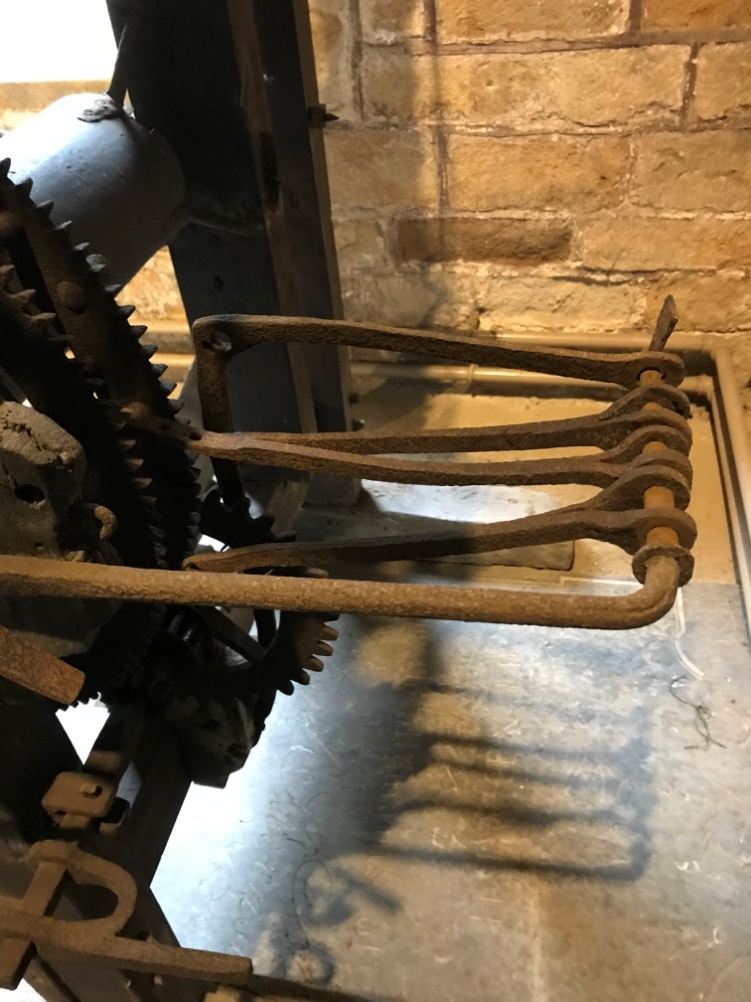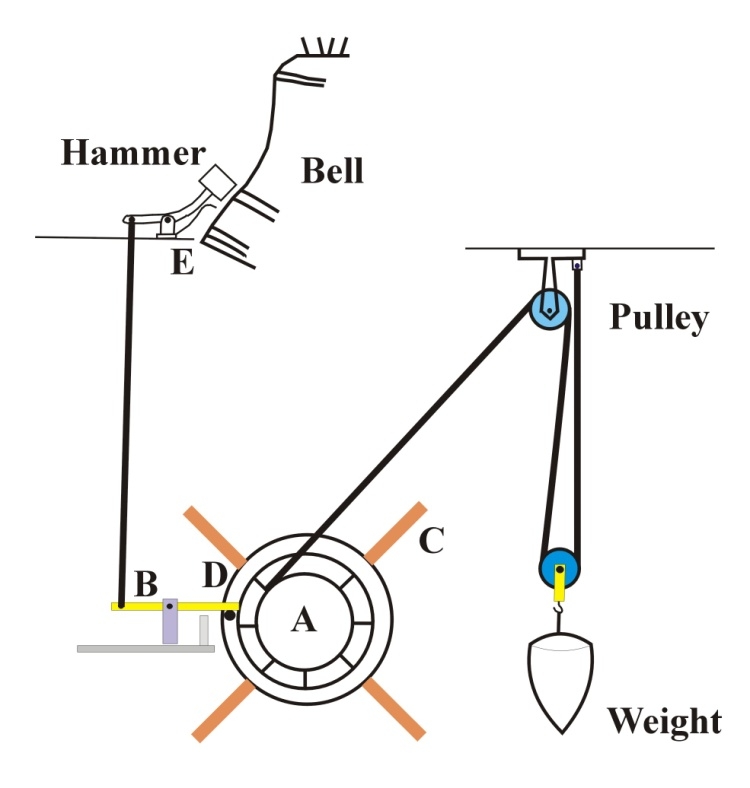
The door-frame clock where it has stood for 200 years after being removed from the church tower
This clock mechanism once stood in the church tower. It did not have a dial but rang the church bells though a series of pulleys and weights. It is of a type known as a “door-frame” due to its likeness to a frame for a domestic door. It was constructed between 1680 and 1690 possibly by a Nottinghamshire clock maker by the name of Richard Roe of Epperstone but we can’t be certain owing to the name, normally carried on the top cross beam, being lost in a repair. It carries a scratched date of 1735 and initial IN, EW and WW but these are either repairers or graffiti. It was removed from the tower circa 1819.
It is a rare three-train clock possibly the only surviving example of its type and is complete although not in working order.
The middle train (drum) had a rope wound round it and was rotated by a weight over a pulley. This operated at a controlled rotation set by an escapement such that one rotation represented 24 hours. This engaged with the top train (drum) which also had a rope, pulley and weight but also had a wheel with 12 pegs engaged with a lever and struck the hours.
All other extant door-frame clocks are two-train but what makes Barton’s different is the third train (lower drum).
This also rotated under the control of the middle train and also had a rope, pulley and weights but this had two wheels with four sets of pegs. These pegs engaged with levers to ring all four bells in a carillon (that is a peal).

The four levers at the rear of the third-train which rang the four bells in a peal on the hour. Each lever has a hole to which the ropes were attached
At the time the clock was the “Rolls-Royce” of clocks and expensive and, although the donor is unknown, it is likely to be one of the Sacheverall family, the then Lords of the Manor.
Also unusual is that two pulleys, a clapper and several weights have survived and four of these are shown in a demonstration frame which is described separately.
In 1764 the clerk of the parish was paid £1:10s per annum to wind up the clock by disengaging the escapement and winding up the weights on the drums. This would be done at a certain time so that the correct time could be set.
The operation is best described by reference to the diagram below (not to scale).

Drum A is rotated by the weight over pulleys. This has to be periodically rewound raising the weight by means of arms C.
The drum is regulated by a vane and latch which controls the time, probably to one rotation per hour for the hour drum.
Attached to the drums are pegs D (only one shown) which engage with arm B as the drum rotates. This raises arm B which pulls away hammer E from the bell.
As the drum rotates, peg D disengages and arm B falls allowing the hammer to strike the bell.
The hammer is kept off the bell, when not striking, by a spring plate.
Our thanks to Ray State for his work investigating and documenting this clock so that it can be displayed to the public.